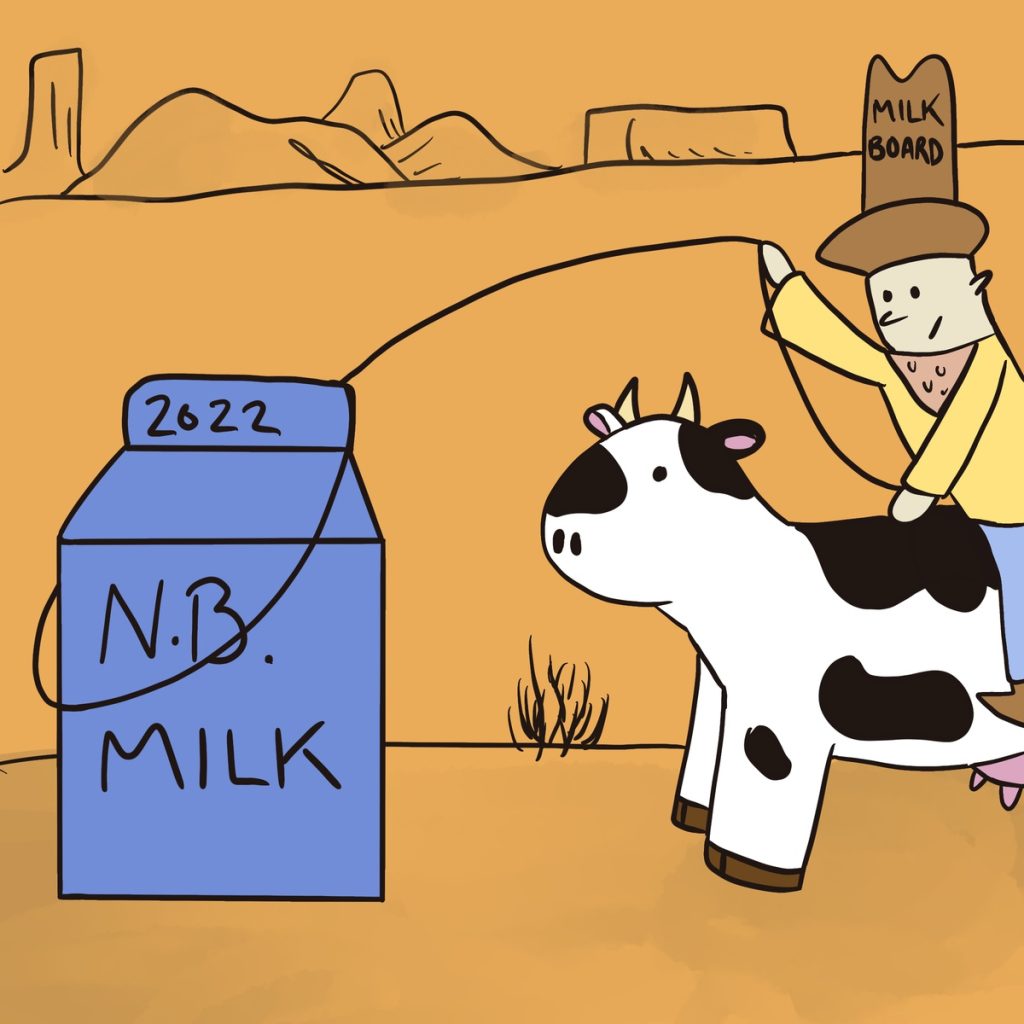Fredericton as we know it now as a white settler town really began with three families who knew their land and farmed it graciously and appreciatively. What was once only settlement of these three families, though it proclaimed exuberant soil for grain and wheat production, is now one of the most prosperous cities in the province.
A portion of Fredericton citizens seems to have forgotten about the history of their land, resulting in a certain surprise regarding increasing milk prices.
The 5.5% increase in milk prices will significantly impact the lives of low-income families and food bank operations within New Brunswick.
“We still don’t know exactly where these numbers are coming from,” said Dalhousie University food researcher Sylvain Charlebois.
Every year milk prices are set based on a cross-country study related to production costs. Unfortunately, this data is not available to the public. However, the Dairy Farmers of New Brunswick (DFNB) own this data, and it is not the government’s to distribute. Although discouraging, DFNB posts annual reports of their statistics which allow consumers to understand why the prices fluctuate.
DFNB spoke on the statistics, explaining their situation.
“We conducted our audit following Canadian generally accepted auditing standards. Our responsibilities under those standards are further described in the Auditor’s responsibilities for the audit of the financial statements section of our report. We believe that the audit evidence we have obtained is sufficient and appropriate to provide a basis for our opinion.”
DFNB received a total revenue of 123 million dollars and bought 179.9 million litres of milk from NB Farmers.
So why did the price increase? ButterGate.
Rewind to January 2022. With more Canadians staying home, demand for butter rose, as well as concerns over the texture of Canadian butter. At-home cooks found their butter much too hard to spread, and food experts later suggested that palm oil is the reason for Canadians’ hard-spreading problems.
Palm oil is an age-old additive that is said to increase milk and fat production in cows. The demand for dairy-related products increased due to COVID, forcing farmers to do what was needed to continue their livelihood.
Palm oil is a legal ingredient, but does increase the risk of heart disease, and the production of which is utterly destructive of the environment in which it is grown. For example, 25% of Indonesia’s rainforests have been destroyed and replaced with water and nutrient-hungry palm plantations. These are artificial, single-crop farms where other local, native vegetation cannot survive. Palm plantations will out-compete and destroy any other living fauna or vegetation.
Canada’s Dairy Processors Association told Real Agriculture there have been no butter production changes or national ingredient regulations. However, Canadians still questioned the claim’s legitimacy and wondered why the spreadability was lacking.
As of February 2022, Canadians are still wondering what is going on with their dairy and its prices.
Are Canadians supporting the palm oil industry when purchasing Canadian butter products? As of now, the confusion still stands.
Some tips for dealing with the dairy debate? Buying local butter and dairy directly from farmers’ markets, and ensuring that your voice is heard in debates over dairy products. While purchasing dairy alternatives can be good, low income families and food banks often don’t have this option, so advocating for yourself as a more privileged dairy consumer is also advocating for those who don’t have access to the same options.




